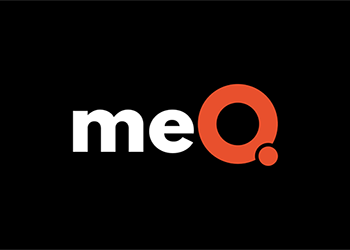“Talk” about finding work-life balance is all around us—in the media, among friends, family, and coworkers. But that conversation needs to shift.
Seeking work-life balance creates an artificial separation between work and life, as if they are mutually exclusive. And we know they aren’t. It also focuses on making these two aspects of life “equal.” However, when you think about it, nothing in our lives has equal weight.
So if balance isn’t attainable, what are we trying to achieve? The answer is work-life alignment. With this approach, you clarify how you want to live your life by using your values to create boundaries that allow for a functional flow between work and life.
Alignment is crucial, because when your work and life aren’t aligned, work can take over your sense of identity and become the only source of meaning in your life. As a result, you might grow to resent work for overshadowing other things that matter to you.
How do you find alignment so that your professional life meshes with who you want to be and how you want to live personally? Start with these three practices.
1. Align priorities with core values.
Have you ever said that you wanted something, but your actions seem to lead you in the opposite direction? I’ve had clients say they want to be there for their kids’ games and have a thriving marriage, but they would stay late at work every day.
Our values motivate our actions and guide our decisions. Alignment allows our priorities to come into agreement with our values. These parents and partners don’t have to completely dismiss their priorities at work. Instead, they need to recognize how their work priorities are misaligned with something that they also truly value, which is a thriving personal life.
To identify your values, look at what’s important to you and see if there’s a theme. Journaling is a great way to do this, or simply write a list. Some core values are adventure, acceptance, respect, independence. Consider experiences that made you feel these values. Next, do the opposite. What experiences suppressed those values? This activity is the first step to aligning your priorities with your values.
2. Set boundaries.
Now that you better understand your values, you can create boundaries that help you prioritize everything that comes your way. Boundaries help keep us disciplined with how we use our time, energy, and resources. It’s easy to become distracted, even by things that we typically consider positive. However, just because something is positive, doesn’t mean it’s beneficial.
When I was working on my book, for example, I recalled how important it was for me to put boundaries in place to be productive. I even turned down business opportunities for a while, because I knew they would interfere with the writing of my manuscript. In this case, “being productive” was what I valued and “time for writing” was my priority. Saying yes to other opportunities would have created more stress, frustration, and possible resentment, because they would’ve taken me away from what I valued most.
To set boundaries, examine your values and priorities, as well as how you aim to achieve them. You can start by looking at just the next few days or the upcoming week. Agree to tasks and activities that support your priorities, and decline those that don’t. If needed, set time-based parameters to help you achieve them.
It’s essential that when you put a boundary in place, you remind yourself that you created it in the first place. Understanding why you value a priority will help you course-correct when you begin easing up on your boundaries.
3. Use emotional intelligence.
We can create better work-life alignment by using emotional intelligence as part of our guide. Emotional intelligence is the ability to understand and manage your emotions, as well as the emotions of other people. When you are self aware, you can identify how you’re feeling and know how your feelings might be dictating your behavior. When you are aware of other people’s emotions, needs, and concerns, you can respond more appropriately and build more positive relationships.
You might think of emotional intelligence primarily as a professional skill, but it can help you build more meaningful connections in your personal life, too. Emotional intelligence helps you recognize how a person, place, or thing makes you feel. It also helps improve your overall well-being, because it decreases feelings of anxiety.
How often do you take the time to practice self awareness throughout the day? You can do this by asking yourself a simple question, such as, “How do I feel doing this task?” Your answer can help you realize what you like to do and what you don’t, which also can help you understand your priorities. When you don’t apply self awareness, you’re more inclined to make rash decisions fueled by an emotional response rather than reflection.
If you don’t enjoy a task at work, for example, perhaps you can delegate it to someone else or ask for assistance. Maybe you’ll discover that you aren’t challenged enough. In your personal life, you might feel restless when you find yourself doing the same activity with your partner every weekend and would like to introduce more novelty in your lives.
Consistent practice of self-awareness will encourage you to be more mindful and gather emotional and cognitive feedback, which will help guide your days and decision making. And when you make better decisions, you decrease unnecessary stress and improve work-life alignment. The result? Greater satisfaction in both your personal and professional lives.
